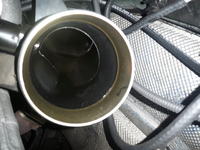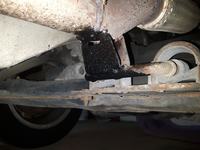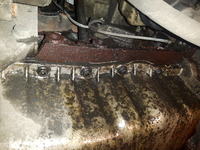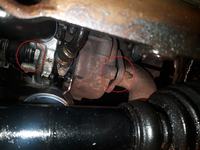Hello,
I have an Audi A3 1.9TDI 74kw from 2001.
I cleaned the variable geometry of the turbocharger because it went into service mode / seared steering wheels.
In addition, it turned out that the turbine actuator was damaged, i.e. it did not hold the pressure.
I managed to clean everything and fold them together.
Impellers do not have any play.
I replaced the actuator with a new one and set it with a vernier caliper in accordance with the previous one.
After the operation the car does not enter the service mode and speeds up nicely.
Unfortunately, I'm worried about her whistle that had not occurred before.
After starting the engine occurs after about 8 seconds, then the steering wheels are certainly set to MAX.
[Film: 53aeb3a3d6] https://filmy.elektroda.pl/12_1487190651.mp4 [/ film: 53aeb3a3d6]
Can actuator regulation help?
Possibly how to approach the subject and what may be the reason for excessive "howling".
The car has no catalyst.
The car started smoking blue
[Film: 53aeb3a3d6] https://filmy.elektroda.pl/96_1488323176.mp4 [/ film: 53aeb3a3d6]
I thought that it was letting the turbine through, however, after dismantling the EGR elbow
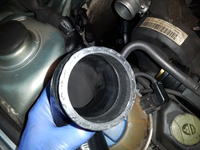
And a look at EGR
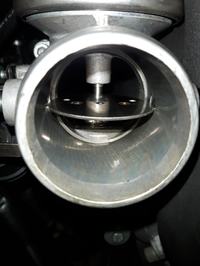
Well, unplug the pipe that goes to the IC dry - only where I marked in red is oil
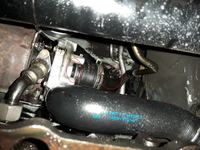
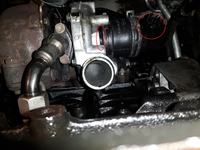
Does Odma give such symptoms?
I have an Audi A3 1.9TDI 74kw from 2001.
I cleaned the variable geometry of the turbocharger because it went into service mode / seared steering wheels.
In addition, it turned out that the turbine actuator was damaged, i.e. it did not hold the pressure.
I managed to clean everything and fold them together.
Impellers do not have any play.
I replaced the actuator with a new one and set it with a vernier caliper in accordance with the previous one.
After the operation the car does not enter the service mode and speeds up nicely.
Unfortunately, I'm worried about her whistle that had not occurred before.
After starting the engine occurs after about 8 seconds, then the steering wheels are certainly set to MAX.
[Film: 53aeb3a3d6] https://filmy.elektroda.pl/12_1487190651.mp4 [/ film: 53aeb3a3d6]
Can actuator regulation help?
Possibly how to approach the subject and what may be the reason for excessive "howling".
The car has no catalyst.
The car started smoking blue
[Film: 53aeb3a3d6] https://filmy.elektroda.pl/96_1488323176.mp4 [/ film: 53aeb3a3d6]
I thought that it was letting the turbine through, however, after dismantling the EGR elbow

And a look at EGR

Well, unplug the pipe that goes to the IC dry - only where I marked in red is oil


Does Odma give such symptoms?



